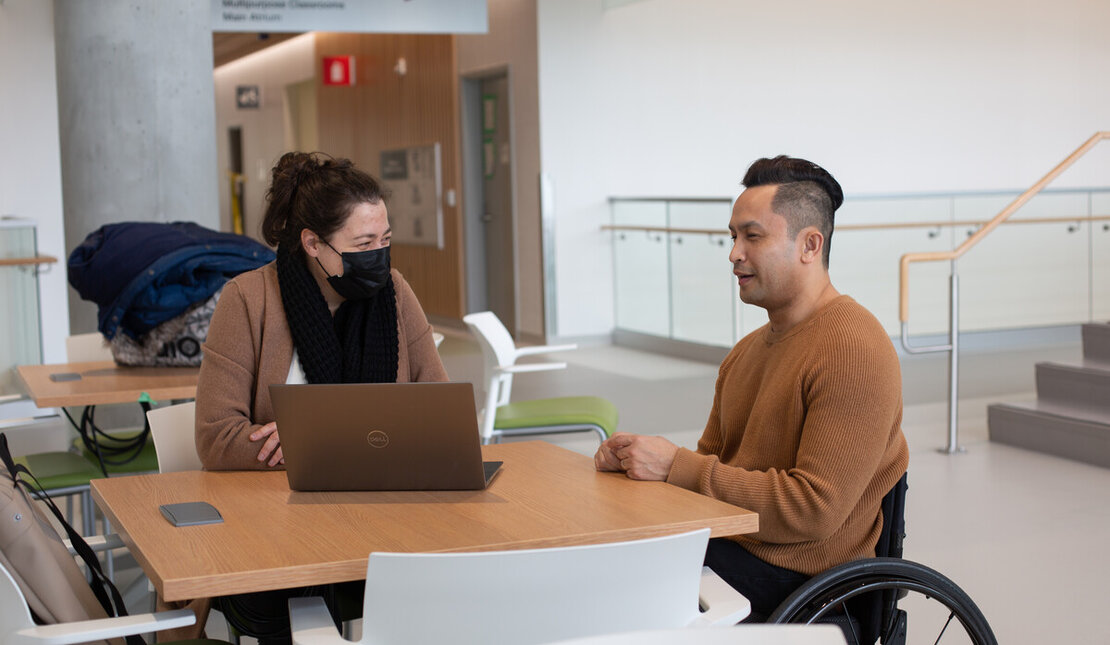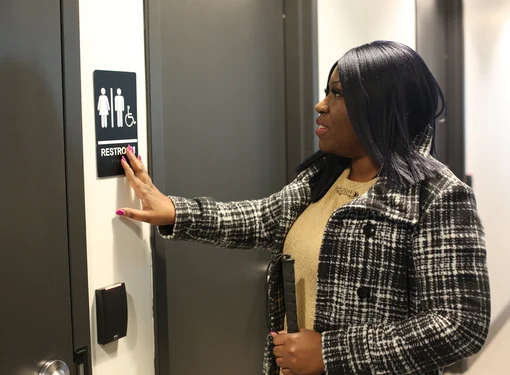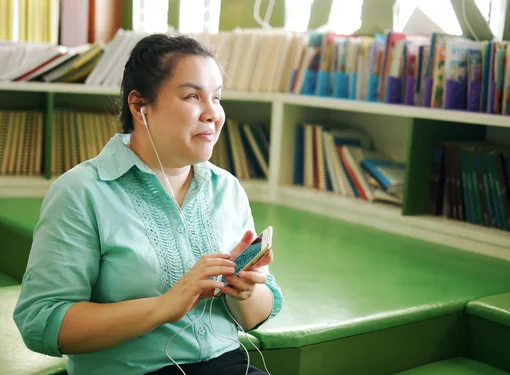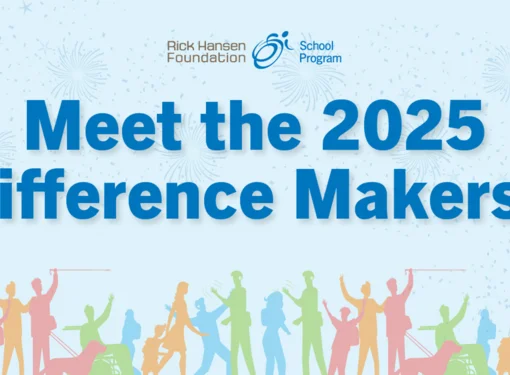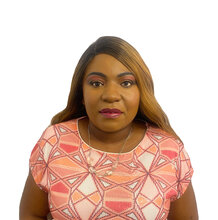Breaking Digital Barriers One Click at a Time | Éliminer les obstacles numériques un clic à la fois
Global Accessibility Awareness Day (GAAD) is an annual event celebrated on the third Thursday of every May. GAAD helps drive awareness about the importance of digital accessibility and promotes inclusion for people with disabilities in the digital world. It aims to cultivate a more inclusive digital environment for everyone and helps highlight the challenges faced by individuals with disabilities when interacting with digital products. The first GAAD was celebrated in 2012 and has since gained significant recognition worldwide.
Why do we celebrate Global Accessibility Awareness Day?
GAAD emphasizes the importance of creating digital experiences that are accessible to all. It promotes the concept of Universal Design, where digital products are always built accessible, not adapted for users’ specific needs. When we acknowledge that people with disabilities have the right to access information just like everyone else, they can fully participate in the digital world. GAAD also serves as a catalyst for positive change as every one of us is encouraged to act to become digital accessibility champions.
How can I celebrate Global Accessibility Awareness Day?
One way to celebrate GAAD is to learn a few easy ways to design accessible communications. Communications can be both accessible and inaccessible. It all depends on how you format your content. These few tips will help you create accessible and readable communications for everyone.
-
Add headings to your content
A heading structure is one of the most important parts of accessible content. It is used to break up content and make finding information easier. People who use screen readers often navigate content by listening to the headings to understand how the content is organized. Avoid using colour alone to define your headings when designing your headline structure. Write descriptive headings for the reader to understand the content underneath. Do not skip heading levels, such as jumping from Level 1 to Level 4.
- Hyperlinks
Hyperlinks should be informative, meaning the link must have a text-based name that conveys clear and accurate information about the destination. For example, instead of writing generic link text like “Click Here,” as the user won’t know what “Here” means, you could hyperlink the entire sentence: “Click here to learn more about our company.” Avoid using URLs that are often a string of random letters and numbers, such as https://rickhansen.com/community/ass-asp/blob/develop/change.md/0019
This is frustrating for those who use screen readers as unintelligible URLs do not provide any meaningful information or context about the content or purpose of the webpage.
- Add alt-text to Images
It is important to add alt-text to visuals as image descriptions provide people with visual disabilities access to your content. There are several types of images, including simple and complex images – both of which convey information and should be described. When writing alt-text, do not include the phrase “This is an image/graphic of…” because screen readers will announce that it is an image/graphic. Write descriptions based on the context surrounding the image, such as the intended audience, the content, etc. Keep your description clear and concise, and use present tense and action verbs to write engaging descriptions.
- Colour Contrast
Colour contrast is crucial when creating accessible content. Use a high colour contrast between your text and background. People with low vision may be unable to access your content if you use low-contrast colours, such as light grey text on a white background.
The Web Content Accessibility Guidelines recommend a minimum contrast of 4.5:1.
In addition, avoid certain colour combinations to accommodate people who have colour vision deficiency, as most of these colours tend to blend into one another, resulting in wrong perceptions:
Red & green, green & brown, green & blue, blue & gray, blue & purple, green & gray and green & black.
Becoming an accessibility champion is a life-long commitment. These few tips will help you start your journey.
To learn more about accessible communications, please check out these other blogs on our website:
5 Tips to Create Accessible Word Documents
5 Ways You Can Make Your PowerPoint More Accessible
10 Tips for Communicating (Virtually) With Someone Who Is Hard of Hearing
6 (More) ASL Signs for Beginners
Le français
La Journée mondiale de sensibilisation à l’accessibilité est un événement annuel célébré le troisième jeudi du mois de mai. Cette journée contribue à promouvoir l’importance de l’accessibilité numérique ainsi que l’inclusion des personnes ayant un handicap au sein du monde numérique. Elle vise à favoriser l’inclusion de toute personne dans l’environnement numérique et à mettre en évidence les difficultés que peuvent poser les produits numériques pour les personnes ayant un handicap. Célébrée pour la première fois en 2012, cette journée a depuis acquis une grande notoriété dans le monde entier.
Pourquoi célébrons-nous la Journée mondiale de sensibilisation à l’accessibilité?
Cette journée permet de souligner l’importance de concevoir des environnements numériques accessibles à tout le monde. Elle contribue à promouvoir la notion de conception universelle, selon laquelle les produits numériques sont toujours accessibles et non adaptés aux besoins particuliers des personnes qui les utilisent. Quand nous reconnaissons que les personnes qui vivent avec un handicap ont le droit d’accéder à l’information comme les autres, elles peuvent participer pleinement au monde numérique. La Journée mondiale de sensibilisation à l’accessibilité sert également de catalyseur de changements positifs, car elle encourage tout le monde à devenir des championnes et champions de l’accessibilité numérique.
Comment puis-je célébrer la Journée mondiale de sensibilisation à l’accessibilité?
Pour célébrer cette journée, on peut notamment apprendre quelques façons simples de concevoir des communications accessibles. Les communications peuvent être accessibles ou inaccessibles. Cela dépend de la façon dont vous formatez votre contenu. Les astuces suivantes vous aideront à concevoir des communications accessibles et lisibles pour tout le monde.
-
Ajouter des en-têtes à votre contenu
La structure de rubriques à en-tête est l’un des éléments les plus importants du contenu accessible. On utilise la structure pour diviser le contenu et faciliter la recherche de renseignements. Les personnes qui utilisent des lecteurs d’écran écoutent souvent les en-têtes pour comprendre comment le contenu est organisé et le parcourir. Évitez de n’utiliser que de la couleur pour définir vos en-têtes quand vous concevez la structure de rubriques. Rédigez des en-têtes descriptifs pour aider la personne qui le lit à comprendre le contenu qui suit. Ne sautez pas de niveaux d’en-têtes, comme passer du niveau 1 au niveau 4. -
Liens
Les liens devraient être informatifs, c’est-à-dire que leur texte doit indiquer de façon claire et précise la destination du lien. Par exemple, au lieu d’écrire un lien générique comme « Cliquez ici » et qu’on ne saura pas à quoi réfère « ici », vous pourriez plutôt inclure la phrase complète dans le lien : « Cliquez ici pour en apprendre davantage au sujet de notre entreprise. » Évitez d’utiliser des adresses URL qui contiennent une suite aléatoire de lettres et de chiffre, comme https://rickhansen.com/community/ass-asp/blob/develop/change.md/0019 Cela est frustrant pour les personnes qui utilisent des lecteurs d’écran, parce que des adresses URL inintelligibles ne donnent aucun renseignement important ou contexte sur le contenu ou l’objectif de la page Web. -
Ajouter du texte alternatif aux Images
Il est important d’ajouter du texte alternatif aux illustrations puisque les descriptions d’images permettent aux personnes ayant une déficience visuelle de consulter votre contenu. Il y a de nombreux types d’images, y compris des images simples et complexes – qui offrent tous deux des renseignements et doivent être décrites. Quand vous rédigez un texte alternatif, n’écrivez pas « Ceci est une image ou un graphique de… » parce que les lecteurs d’écrans annonceront la présence d’une image ou d’un graphique. Écrivez des descriptions basées sur le contexte de l’image, par exemple le public visé, le contenu, etc. Gardez votre description claire et concise et utilisez le présent et des verbes d’action pour écrire des descriptions stimulantes. -
Contraste de couleurs
Le contraste de couleurs est primordial dans la création de contenu accessible. Utilisez des couleurs à contraste élevé entre votre texte et le fond. Les personnes ayant une faible vision pourraient être incapables de consulter votre contenu si vous utilisez des couleurs à faible contraste, par exemple du texte gris pâle sur un fond blanc.
Les Règles pour l’accessibilité des contenus Web (en anglais) recommandent un contraste minimal de 4.5:1.
En outre, il faut éviter certaines combinaisons de couleurs pour accommoder les personnes ayant des troubles de vision chromatique, puisque ces couleurs ont tendance à se confondre, ce qui rend leur perception plus difficile :
rouge et vert, vert et brun, vert et bleu, bleu et gris, bleu et mauve, vert et gris ainsi que vert et noir.
Devenir une championne ou un champion de l’accessibilité est un engagement pour toute la vie. Ces trucs peuvent vous aider à vous lancer.
